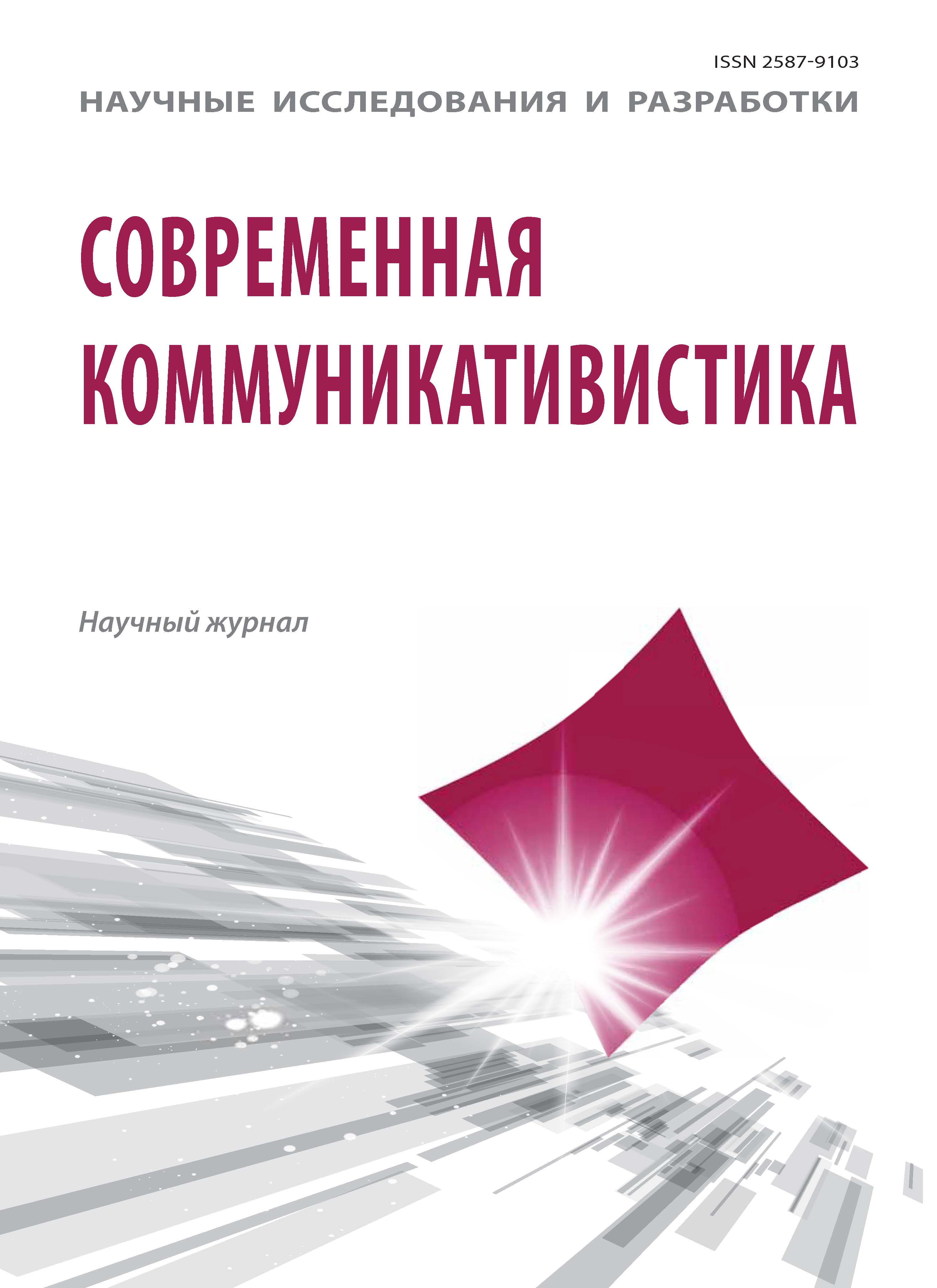The article considers pragmatonyms (verbal trademarks) as fashionable objects and analizes their characteristics. The analysis is based on the theoretical model of fashion suggested by A.B. Gofman, who sees the core values (attributive / inner) as structural components of fashion. These are universality, modernity, demonstrativeness, pun. The approach suggested by I.V. Kryukova is used to identify fashion tendencies in pragmatonymy. She offers a method for determining the criteria of fashionable objects by proper names, considering them in horizontal (spatially) and vertical (in time) dimensions. The author brings out models of creating verbal trademarks and identifies fashionable tendencies of their creation: pragmatonyms based on the lexemes with linguocultural components (including non-equivalent vocabulary); pragmatonyms motivated by the lexemes Russia, Russian, Slavic; as well as creating the names reflecting nostalgia of the Soviet period; pragmatonyms with the components our, your; verbal trademarks based on pun.
pragmatonym, fashion, universality, modernity, demonstrativeness, pгn, fashionable tendencies.
С переходом российской экономики на рыночный курс в коммерческой сфере возникает масса объектов, требующих номинации. Появление права собственности на название и конкурентная борьба за потребителя обусловливают поиск новых оригинальных номинативных решений для создания словесных товарных знаков, обозначаемых в ономастических исследованиях прагматонимами.
1. Abramova E.S. Nominativnoe pole kontsepta «Rossiya» [Nominative the “Russian” concept]. Vestnik Leningradskogo gos. un-ta im. A.S. Pushkina [Bulletin of Leningrad State. Zap them. AS Pushkin]. 2010, V. 1, I. 3, pp. 115-120.
2. V Rossii narastaet nostal’giya po sovetskim vremenam [Russia is growing nostalgia for Soviet times]. Inosmi.ru [Inosmi.ru]. 2016. Available at: http://inosmi.ru/social/20160202/235240110. html (accessed 01 July 2016).
3. Vrublevskaya O.V. Sovremennost’ kak osnovnoy kriteriy modnogo pragmatonima [Present as the main criterion for fashion pragmatonima]. Elektronnyy nauchno-obrazovatel’nyy zhurnal VGSPU «Grani poznaniya» [Electronic Journal of Research and Education VGSPU “Facets of knowledge”]. 2015, I. 1, pp. 56-59. Available at: http://grani.vspu.ru/files/publics/1423836758. pdf (accessed 06 July 2016).
4. Gofman A.B. Moda i lyudi. Novaya teoriya mody i modnogo povedeniya [Fashion and people. New fashion theory and fashion behavior]. Moscow, Nauka Publ., 1994. 160 p.
5. Detyam morozhenoe [Children cream]. Sovpediya [Sovpediya]. 2015. Available at: http://sovdepia.ru/1970-1980/morozhenoe. html (accessed 04 July 2016).
6. Krompton A. Masterskaya reklamnogo teksta [Workshop advertising text]. Moscow, «Dovgan’» Publ., 1998. 243 p.
7. Kryukova I.V. Reklamnoe imya: ot izobreteniya do pretsedentnosti [Advertising name: from invention to precedent]. Volgograd: Peremena Publ., 2004. 288 p.
8. Kryukova I.V. Nauchnye podkhody k issledovaniyu modnogo imeni [Scientific approaches to the study of fashion name]. Imya sobstvennoe v zhizni i literature [Name of your own life and literature]. Donetsk: Azbuka Publ., 2015, pp. 157-165.
9. Kurganova E.B. Igrovoy aspekt v sovremennom reklamnom tekste [The gaming aspect of modern advertising text]. Voronezh: VGU Publ., 2004. 122 p.
10. Neyming po-russki: otkuda berutsya nazvaniya konfet? [Naming in Russian: where are the names of candy?]. Sostav.ru [Sostav. ru.]. 2011. Available at: http://www.sostav.ru/news/2011/07/28/ doc6/ (accessed 31 May 2016).
11. Neflyasheva I.A. Okkazional’nye pragmatonimy - lichnye imena sobstvennye [Occasional pragmatonimy - personal proper names]. Problemy obshchey i regional’noy onomastiki [Problems of general and regional onomastics]. Maykop: AGU Publ., 2014, pp. 211-212.
12. Popova Z.D., Sternin I.A. Kognitivnaya lingvistika [Cognitive Linguistics]. Moscow, AST: Vostok-Zapad Publ., 2007. 314 p.
13. Proval’nye brendy [The failed brands]. ADME.RU [ADME.RU]. 2014. Available at: http://www.adme.ru/tvorchestvo-reklama/ provalnye-brendy-243455/ (accessed 22 December 2014).
14. Sekret zabavnykh nazvaniy IKEA [The secret of fun IKEA names]. GoRabbit [GoRabbit]. 2014. Available at: http://gorabbit. ru/article/sekret-vseh-zabavnyh-nazvaniy-mebeli-v-ikea (accessed 07 June 2016).
15. Superanskaya A.V. Tovarnye znaki i znaki obsluzhivaniya v Rossii [Trademarks and service marks in Russia]. Metodologia bada onomastycznych [metodologia bada onomastycznych]. Olsztyn Publ., 2003, pp. 527-542.
16. Tovary iz 90-kh [Products from 90]. 90nn.ru [90nn.ru]. Available at: http://90nn.ru/chtivo-90-kh/raznoe/vkus_90-x/ (accessed 15 December 2014).
17. Ushedshiy v proshloe SSSR [Bygone USSR]. Nivasposad.ru [Nivasposad.ru]. Available at: http://www.nivasposad.ru/school/ homepages/belousova/2010-2011/konkurs/shustrova_anastasiya_m/ html/product/product_candy.htm (accessed 05 December 2014).
18. Fayzullina I.I. Lingvokul’turologicheskiy aspekt pragmatonimov respubliki Bashkortostan [Lingvokulturologichesky aspect pragmatonimov Republic of Bashkortostan]. Onomastika Povolzh’ya [Onomastics of the Volga region]. Yaroslavl’: YaGPU Publ., 2012, pp. 307-312.
19. Shimkevich N.V. K voprosu o pragmatizme ergonimov v nekonkurentnoy srede [On the question of pragmatism ergonemy in a non-competitive environment]. Onomastika i dialektnaya leksika [Onomastics and dialect vocabulary]. Ekaterinburg: UrFU Publ., 2003, I. 4, pp. 131-136.







